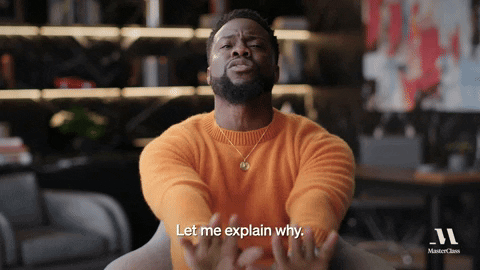- The Ladder
- Posts
- Moving From Novice to Marketing Master
Moving From Novice to Marketing Master
🧠 Proven Step-by-step Guide to Mastering and Applying Knowledge 🚀

👋 Hello and welcome,
This week we’re taking a model from 1950’s learning theory and academia to apply into our marketing leadership practice - without the tweed jacket and elbow patches.
If you missed last week’s edition on Unhinged Marketing, why and how it works, you can catch-up here ⏪
This week:
I hope you enjoy.
Are ye ready kids?


First time reading The Ladder, click below to subscribe.
⏱️ ~ 5 minutes 47 seconds read
The internet is FULL of experts. You might even consider yourself a bit of an expert in your field.
But how does one ascend to ‘Expert’ level? How do you know when you’ve hit these lofty heights?
Lucky for us there’s actually a simple 6 step model that helps us understand our own level of expertise, and that of those around us.
It’s a powerful model that can be used to anchor our level knowledge in any given field and then determine how we next ‘level-up’ and shoot past other in our field.
GOOD MORNING MR. BLOOM 🌹
In 1956 Professor Benjamin S. Bloom presented his publication, "Taxonomy of Educational Objectives," which finally provided a systematic classification of the levels of understanding that educators should aim for in teaching.
A real step change in eduction, it provided a nuanced model that moved learners past a simple memorise through repetition practice.

Pre-1950’s education in action
The model became known as “Blooms Taxonomy” and includes 6 distinct levels of understanding to go from a simple beginner with basic memory of facts, all the way through to a true expert who can synthesise, diagnose and even create new theories or approaches to a subject.
We’ll get to these level in detail shortly.
Bloom's work has had a lasting impact on educational theory and practice. This extended into the creation of educational standards and objectives, instructional design, and the formulation of examination questions that assess various cognitive levels. It also influenced teacher training programs by providing a clear, actionable framework for discussing and implementing educational goals.
This framework became the OG for educational theory, and how we understand… understanding 🤔
Finally, his framework also emphasised the role of critical thinking as a indicator of true understanding of a subject - which in turn propelled academic standards and thinking.
Thank you Professor Bloom 🫡
SIX LEVELS TO PARADISE 🎶
So what is this taxonomy? And why should you care?
To better illustrate why this matters to you, where going to walk through each level of the taxonomy with examples that relate to cooking spaghetti carbonara and the levels of understanding or expertise for a marketing team 🍝
Sounds good? Makes perfect sense?

Level 1 - Remembering
The first step in acquiring expertise is the ability to remember key information. For instance, if you're learning to cook, you start by memorising the recipe for spaghetti carbonara. This doesn't involve understanding the underlying culinary techniques or the science of the ingredients; it simply focuses on the ability to recall the steps and components. This stage is fundamental as it forms the base knowledge upon which deeper understanding and skills are built.
If you simply cannot remember, you cannot progress.

At this foundational level, marketing leaders should ensure that their teams have a solid grasp of basic marketing principles and practices, tools, and the company's product or service details. This includes memorizing key market data, understanding customer demographics, and recalling past campaign metrics. As a leader you should encourage your teams to consistently refer to this foundational knowledge during planning sessions to make informed decisions.
Level 2 - Understanding
After memorising the information, the next step is to understand it. This involves questioning and exploring the reasons behind the information you've learned. For example, why do you add salt to pasta water, or why use pancetta instead of bacon in carbonara? Gaining a deeper understanding helps to solidify knowledge and prepares you for applying this information in practical settings.

Leaders must help their team members understand the 'why' behind each marketing activity. This could involve discussions on why certain tactics work better with particular demographics, the reasoning behind the company's branding guidelines, or the psychological triggers that marketing activities aim to activate. This deeper understanding enables marketers to connect their tasks with larger business objectives, and better understand how and why approaches drive outcomes and how that can be replicated.
Level 3 - Applying and Making
Application of knowledge is where theory meets practice. In the context of becoming a master spaghetti carbonara chef, this means actually making the spaghetti carbonara. Get out the pots and pans, turn on the stove, chop the onions and importantly, taste the end result 😋
Without the application of knowledge in the real world - you’re just that guy who’s watched a lot of MasterChef and just yells at the TV on a Sunday night.
In marketing leadership this involves executing designing and executing strategies (with oversight) that are informed by the data and insights at hand. Using learned concepts, business and market data to design a campaign that leverages seasonal trends or consumer behaviour insights effectively.
It super-important at this stage to create and encourage an environment where team members can test their ideas in controlled environments, analyse outcomes, and refine their understanding. More of that in the next level 👇️
Level 4 - Analysing and Diagnosing
At this stage, you start breaking down the learned concepts into their components to understand their relationships better. This involves a detailed examination of each ingredient, why certain ingredients are used instead of others and the effect of altering these ingredients or the order of the steps.
This is where you truly understand why you brown the onions first and don’t throw the raw chopped onion into the pot with a can of tomatoes later.
Analysis is critical in marketing, where leaders must constantly evaluate the effectiveness of campaigns, dissect market trends, and understand competitor strategies. This step involves critically looking at campaign results to determine what was successful and what wasn’t, diagnosing the results not only in relation to your tactics and messaging but also in the context of the current market and your brand.

This is the stage where your team begin to develop an understanding and views on how different elements of a campaign, the market, the brand and the timing interact and drive overall performance. And are therefore prepared to take this understanding forward into future campaigns and marketing activity.
Level 5 - Evaluating and Discerning
Evaluation is all about critical thinking and judgement. When it comes to your spaghetti carbonara, this would look like being able to go toe-to-toe with Matt Preston arguing the merits of one recipe approach to another. Tasting different dishes, critiquing its elements to understand correctly identify and isolate what steps or ingredients have been used in what order.
Possibly wearing a cravat, stoking your chin and staring into the soul of a terrified amateur TV chef, with a knowing look in your eyes.

Sometimes the truth hurts
My apologies to those who’ve never watched MasterChef.
When it comes to marketing, this stages goes beyond analysis and diagnosis. Evaluating and Discernment is the ability to cohesively argue for and against specific strategic approaches, research methods, segmentation and targeting practices, channel tactics, pricing models and more in the context of best solving the business problem at hand.
All areas across the marketing spectrum are understood through the prism of the business and consumer/ market need.
Being able to not only argue for or against, you are also able to discern therefore which course of action is more likely to lead to success (no one gets absolute 100% guarantees in marketing).
Here, is where marketing leaders are involved in higher-level strategic decision-making, not just observation, diagnosis and further hypothesis - but being able to evaluate with conviction various strategic options and making the right choices on how to proceed.
This is the essence of good strategy - making choices, ideally the right choices.
Level 5 - Creating
The final step of Bloom’s taxonomy is creation, which involves synthesising all the learned knowledge and skills to produce something truly original. You’ve plumbed the depths of the spaghetti carbonara seas (mmm..) and have surfaced with your own truly unique approach.
This might be a unique format to the dish (say a pie or even ice cream?… 🤮 ) or it could be contributing to new ideas in the culinary field. Say taking the methods and essence of a carbonara and applying it across a different flavour base.
When it comes to a marketing team this step is all about demonstrating strategic innovation and creativity. Creative marketing leaders encourage their teams to develop new marketing concepts, innovative campaigns, or process methods that not only push the business forward but also set new standards in the industry. This could involve pioneering digital marketing techniques, exploring untapped market segments, or developing unique customer engagement strategies.
This is the space where you become known, not only for outstanding knowledge and expertise, but for innovating something that is uniquely created by you.
Think about the innovators in the marketing world - this might be someone like Liquid Death founder and CEO Mike Cessario, or Steve Jobs. These are individuals who have ascended past pure knowledge and subject matter understanding to create something truly unique, distinct and successful for the long term.
Importantly it involves a creative integration of all the knowledge and expertise of the lower five levels of knowledge and experience - pulling adjacent or seemingly unrelated concepts into the space to develop something previously unimagined.
MONDAY ACTION LIST 📝
OK, so how are we taking this gem of a model and bringing it back into the office on Monday? Here’s a few action items you could cross off next week to make use of Blooms Taxonomy in your marketing and leadership work.
1. 📚️ Develop Comprehensive Training Modules:
- Action: Create a series of training sessions that cover the basics of marketing principles, tools, and current industry trends.Ensure this is part of your teams onboarding.
- Purpose: These modules will serve to ensure that all team members have a solid foundation in remembering and understanding basic marketing concepts, and critically share the same language, both are essential to working together and before moving to higher-order cognitive skills.
2. 🤓 Integrate Knowledge Assessments Into Campaign Analysis:
- Action: Design a standard approach to how all post-campaign analysis involve a group presentation and then an assessment at the end to evaluate the team's retention and understanding of the results.
- Purpose: This will help in reinforcing learned concepts (Remembering and Understanding) and provide opportunities for Applying and Analyzing information, crucial for developing problem-solving skills in marketing contexts.
3. 🤔 Encourage Critical Analysis Through Workshops:
- Action: Organise workshops where team members can analyze current marketing campaigns (both successful and unsuccessful ones) to identify factors that influenced their outcomes.
- Purpose: These sessions will promote the Analyzing and Evaluating, helping team members to not only dissect campaigns but also to make informed decisions about modifying strategies for better outcomes.
4. ♻️ Foster a Culture of Innovation and Creative Thinking:
- Action: Create an 'Innovation Lab' where team members can pitch and prototype new marketing ideas in a supportive environment. Develop a process for rapid testing and learning within the team.
- Purpose: This encourages the Creating aspect of Bloom's taxonomy, allowing team members to use their acquired knowledge and analytical skills to innovate and contribute original ideas to the company’s marketing strategies.
5. 🤝 Establish Mentorship and Continuous Learning Opportunities:
- Action: Pair less experienced marketers with seasoned team leaders for mentorship, and provide opportunities for all team members to attend industry conferences or engage in advanced online courses.
- Purpose: This supports continuous growth through all levels, from Remembering to Creating, and ensures ongoing professional development tailored to each marketer’s career stage. Importantly encourage your more senior team members to present at industry events as a way to necessitate pushing their expertise to another level.
By guiding your marketing team through these stages, you not only enhance their capabilities and drive greater innovation and effectiveness in your organisation’s marketing efforts, but more importantly you’re helping them to develop as a marketer and doing the right thing by their careers.

That’s it for today - Now you have the foundations of what it means to truly develop expertise for yourself and for your team. I look forward to hearing about how you might put this into practice.
Have you come across this model before?
Can you identify where you or members of your team might sit on this hierarchy?
Hit reply, I’d love to hear your thoughts.
If you enjoyed this edition, please forward it to a friend who’s looking to level-up their leadership game - They’ll love you for it (and I will too) ⏭️ 💌
🔗 Marketing Articles You Shouldn’t Miss
🔍 Discover 9 Clever Strategies to Outmanoeuvre Your Competitors' Ads
🧠 Unlock Marketing Mastery: Applying Expectancy Theory to Captivate Customers
📌 Revolutionize Your Popups: Essential Design Tips to Enhance User Experience
🚀 Explosive Growth Secrets: How Referral Marketing Boosted a Company by 150X
🎯 Master the Art of Media Outreach: Pitch Like a Pro for Top-Notch PR and Links
🧰 Let’s Top-Up That Toolbox
🔥 CrowdLense: Instant Alerts for Online Mentions of Your Brand
👾 MilestoneFlow: Create Custom Gamified Experiences & Personalised Journeys
✨ Muraena: Lead Generation with Cutting-Edge AI Targeting
📈 AndFacts: Gain Real-Time Insights into Consumer Behaviour and Preferences with Real Data
⚡ TweetEasy: Scale 10X Faster on X
🙋 Got a Question? I Might Just Have Some Answers.
Each week I'm here to answer any question you might have in the space of marketing, strategy, leadership, digital and everything in between.
Just hit 'reply' and let me know what's on your mind, and I'll share my answer with the community the very next week, including a special shout out (if you're into that, otherwise we can keep it anon) 🥸
Reply